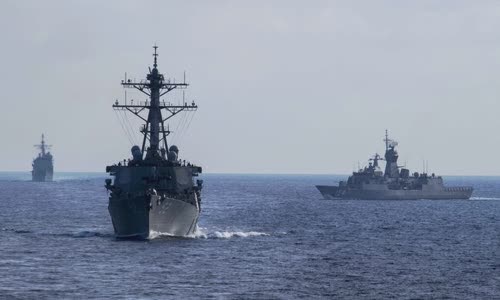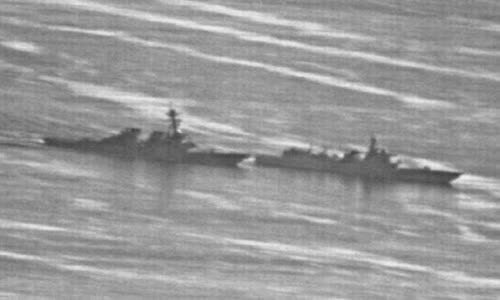US-China tensions caused by trade war and Covid-19 could intensify confrontation between the two sides in the South China Sea, according to experts.
US Deputy Defense Deputy Assistant in charge of Southeast Asia Reed Werner on May 19 revealed that Chinese fighters have harassed US muscle reconnaissance at least 9 times in the South China Sea since mid-March, during

US and Australian warships exercise in the South China Sea in late April Photo: US Navy
The so-called "increasingly reckless" actions by China prompted the US Navy to rush the Roosevelt aircraft carrier to continue its mission, although many sailors were still isolated on land due to Covid.
Observers assess China's drastic moves in the South China Sea forcing the United States to take appropriate measures.
To oppose China's illegal sovereignty claim, the US Navy regularly conducts freedom-of-navigation patrols, inadvertently encroaching on Chinese possessions and illegally renovated in the South China Sea.
China responded by often deploying fighter jets on US warships to conduct a freedom of navigation patrol operation, sometimes flying just a few dozen meters from the bow of the US battleship.
"The patrols are always very stressful. The US captain must remain calm, avoid unnecessary confrontation and constantly report to his superiors. The crew often exhales after the end of the patrol."
In recent patrols, the destroyer USS Bary and cruiser USS Bunker Hill also encountered Chinese ships but did not allow the situation to escalate dangerously.

Chinese warship (right) faces USS Decatur on September 30, 2018 Photo: US Navy
The current US goal is to gradually change China's behavior without disrupting international relations, leading to the Cold War or armed conflict.
Stavridis suggested that measures to increase pressure on China could be carried out in parallel with the proposed cooperation, such as negotiating a second-stage trade agreement, cooperation on Arctic trade routes, implementing
"Basically, the US will both cooperate and confront China in the coming time. The situation in the East Sea will continue to be tense," said former Admiral Stavridis.
Meanwhile, Olli Suorsa, an expert at Singapore's SS Rajaratnam School of International Studies, warned that the US and China's joint activities in the South China Sea could lead to the risk of misunderstanding and escalating external tensions.
Many experts also agree that recent US-China tensions in the South China Sea show that the two sides are increasingly distrusting each other in the context of the Covid-19 pandemic still raging in the world.
"Both think that the enemy can take advantage of the Covid-19 crisis to increase the pressure. However, the risk of conflict is still low because neither side wants to go to war," said Zhang Baohui, director.



 Amy Thurman
Amy Thurman







